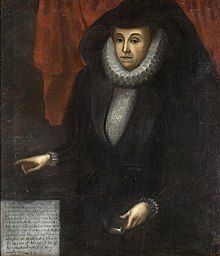Online I found a comic depiction of Shakespeare’s play King Lear, it obviously is much different than the actual play itself, but it adds a twist of humor. King Lear is a tragedy that ends in almost everyone either killing themselves, being killed, or just dying. Here I will review the portion of the comic depicting Act 5, as well as compare it to Shakespeare’s play.
King Lear’s Act 5 begins with Regan eloquently declaring her love for Edmund, but also questioning his feelings towards her sister Goneril. She tells him to “speak the truth,” to which he replies a couple lines later with “no, by mine honor, madam” (Lines 7 & 14). The comic keeps the same plot, but changes the conversation into a significantly shorter and more modern version, adding small pictures too. Unlike Shakespeare’s long eloquent speeches and formality in his play, the comic goes as far to have Regan refer to Edmund as “Eddie” (good tickle brain). This creates a comedic affect that fits perfectly into a comic, yet would be vastly inappropriate for a tragic play.
Later in Scene 3 of Act 5 of King Lear Edgar and Edmund finally have the brotherly duel that was bound to happen, and Edgar defeats Edmund. This is starts the domino effect of deaths. The comic makes fun of Edgar’s disguises that he changes between throughout the end of the play by depicting it as a “Phantom of the Opera mask” which draws attention to how no one in the play could see through any of Edgar’s disguises, even though they’ve known him for years (good tickle brain). In the comic Edgar himself even draws attention to this through his sarcastic dialogue when he calls them “cunning disguises” (good tickle brain). In the play there are also loud trumpets that signal a battle, which would have been very brave and noble as a Herald has to give the order to “let the trumpet sound” (Line 107); however, in the comic the sound the trumpets make is a small “toot” noise (good tickle brain).
At the end of the play when Lear enters the scene with Cordelia’s dead body in his arms he has a moment of hope as he thinks he sees her breathing, “Lend me a looking-glass; / If that her breath will mist or stain the stone, / Why, then she lives” (Lines 261-3). This moment that shows a father’s hope that is youngest daughter is still alive brings the audience to an emotional state. The comic includes this moment by having Lear exclaim, “Look on her! Look, her lips! Look there!” which also shows this emotional father, except it is abruptly interrupted by an “urk!” once he discovers her to surely be dead (good tickle brain). This comedic relief breaks the tension, and is something that is not in Shakespeare’s play.
Overall, the comic kept the basic plot elements of Shakespeare’s King Lear, but made it original by simplifying and making it laughable. The comic maintained the themes of family and loyalty that are present throughout the play, specifically by including the main parts of the dialogue between characters.

